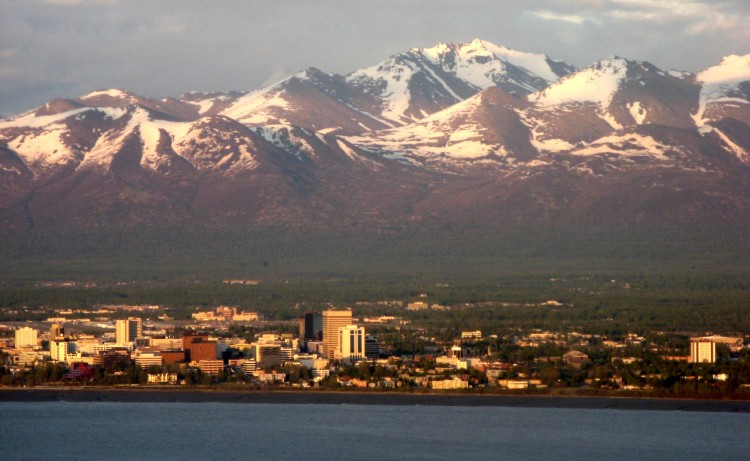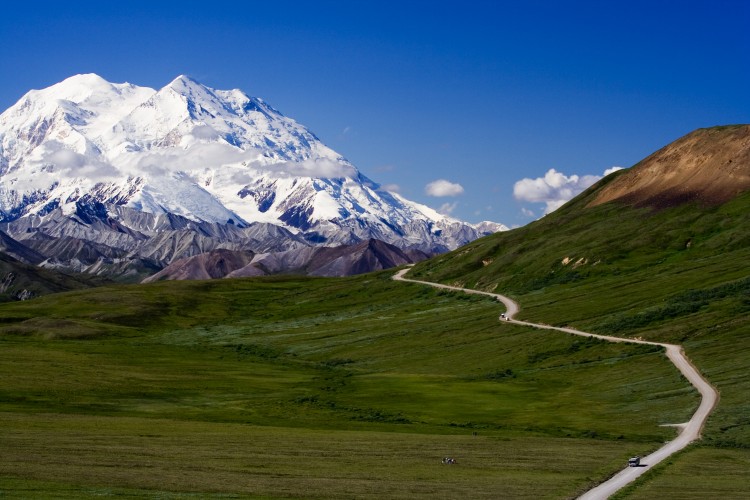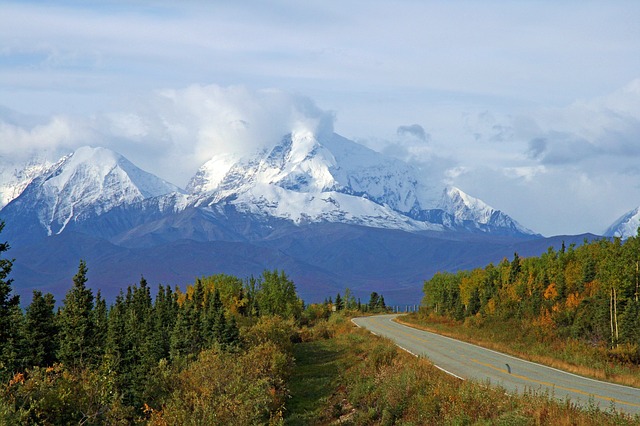
The Last Frontier — The Land of the Midnight Sun — whatever you call it, you’re referring to Alaska. Although few choose to live there, many people choose the diverse terrain of the largest U.S. state as their vacation destination.
Though many explore via cruise ship, others opt for a more adventurous form of travel to experience the area. In 2014, Canadian librarian Emma Lawson and her partner chose the latter. If you find their trip inspiring, please share with others who may be contemplating this majestic journey.
Planning the Trip
As is often the situation when a couple has money, they are so busy working they don’t have time for extensive traveling. And when they do have the time, it’s usually when they don’t really have the money to afford travel. This couple was fortunate to have a full month to explore Alaska, but due to financial circumstances they wanted to spend no more than was absolutely necessary.
They used Emma’s travel points to book their flights to Anchorage and began researching rental car options. Most of the rental companies quoted summer rates of $400 to $800 depending on the size and level of luxury. For example, an SUV would be double the price of an economy-sized car. Since they planned to be there for four weeks, this expense would eat up the majority of their traveling budget.
Renting a Multipurpose Vehicle
At the recommendation of one of the car rental agent they rented one of his camper vans to save money. This allowed them to combine their boarding expenses with their vehicular expenses at a reduced rate. Although they were originally quoted $400 per week plus tax, once they added the insurance they were able to negotiate a deal of $2500 for the whole four months.
One of the benefits of using a camper in Alaska is that you can sleep nearly anywhere. Since they would be boondocking (also known as dry camping) this would really reduce their overhead. The agent even threw in a few provisions, such as a camping chair, some bear spray, and a half canister of fuel.
First Time Boondocking
The van was anything but fancy. It consisted of a bare interior with two front seats. The bedding was a foam pad covered with an unzipped sleeping bag and a couple of throw pillows. With their backpacks stowed by the back door, they would have plenty of sleeping room.
After spending the first day hiking and exploring in Chugach National Forest, they looked for a spot to park for the night. They didn’t have to go far. Twenty minutes outside of Seward, they found a pullout on Glacier Road that provided the perfect location for their first boondocking experience.
With a bit of research, they ensured that the area had no restrictions against dry camping before settling in for the night. The last thing they — or any camper, for that matter — wants is a knock on the door in the middle of the night informing them that they needed to “move along.”
The next morning, they awoke to the fresh air, sunlight, and beautiful scenery that camping in nature often provides. They enjoyed some coffee and breakfast cooked on a small camp stove, which allowed them to save money on restaurant meals, as well as motels.
Boondocking Urban or Suburban Options
Many people swear by the parking lots of Wal-Mart and Fred Meyers as the free “go to” dry camping locations. Some cities have ordinances against this, however, so it’s always good to check ahead. When in doubt, ask the store manager.
Boondocking in city limits is never as glamorous as staying at a national park, but it does have some advantages. While, in the wilderness, you are likely to be doing the majority of your restroom activities outside, 24-hour Wal-Mart has indoor restroom facilities. This allows you to…ahem, take care of business, as well as wash your hands and face.
Also, they are usually well lit. Some people like this for the security it provides. Some people hate this for the lack of privacy. It really boils down to personal preference. Emma and her partner stayed several nights in parking lots in a variety of towns.
Boondocking Rural Options
When you camp in rural areas, you are pretty much guaranteed privacy and usually a nice view. The couple stayed many nights in different pullouts.
They purchased a copy of The Milepost. This yearly reference book provides a guide to all of the Alaskan roads including gas stations, motels, campsites, the location and size of pullouts, scenic views, and laundromats with showers, for example. This enabled them to find the best boondocking locations to accommodate their itinerary each night, such as on the spit in Homer or Denali National Forest.
In Conclusion
Armed with a giant container of water and The Milepost, Emma and her partner spent 14 nights boondocking, 12 nights in a tent, and 2 nights at a hostel.
Along with reference books, there are many websites and online applications that can assist a camper in finding adequate accommodations for the evening, such as AllStays and GoCampingAmerica. Although the sites and regulations are different in each state, much of the information regarding dry camping is transferable.
If you found this inspiring or informative, please share with like-minded friends and family. Then go explore the great outdoors.
Source: The Billfold








